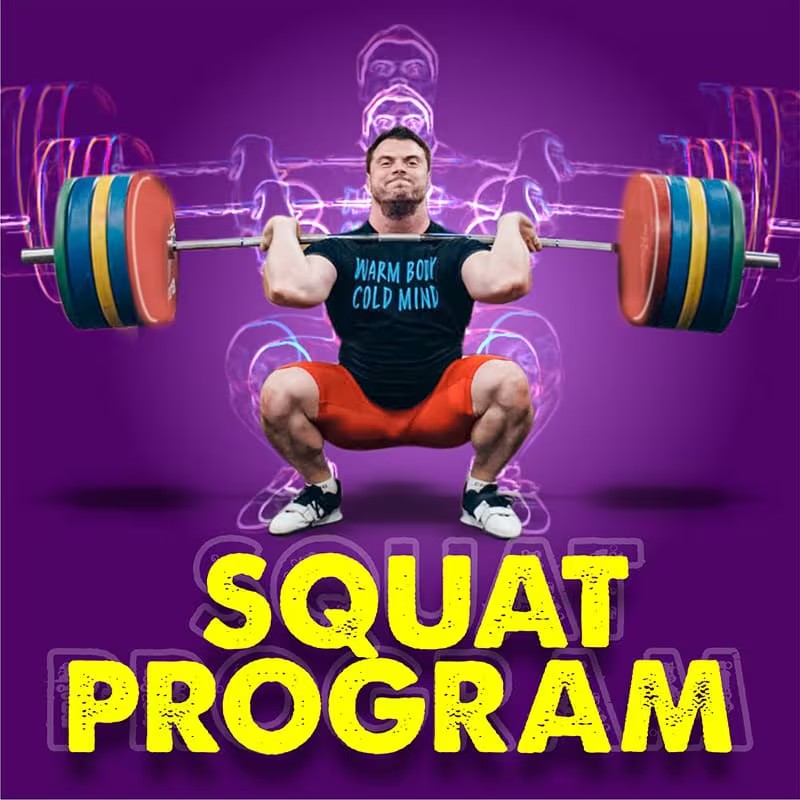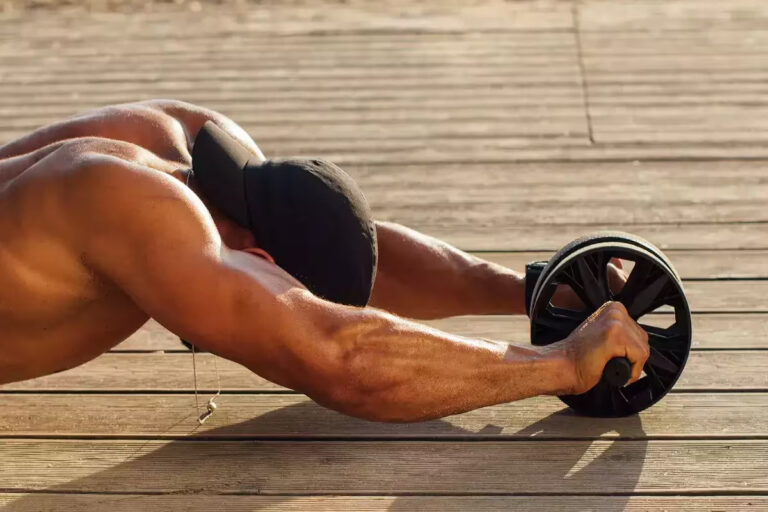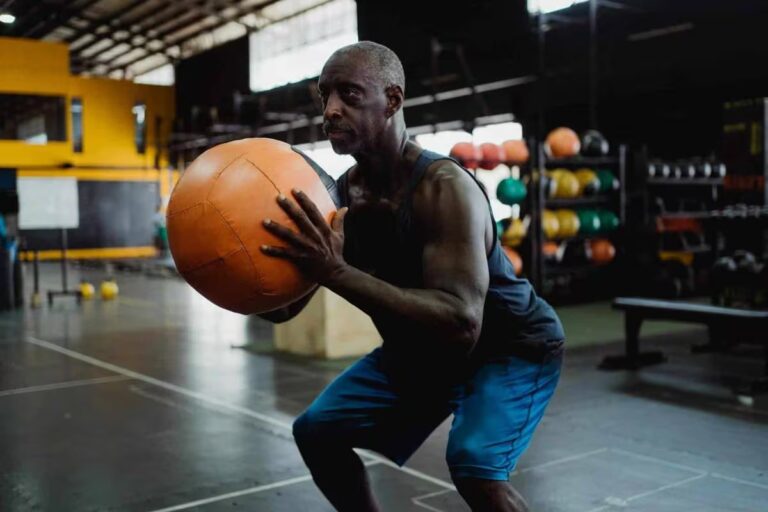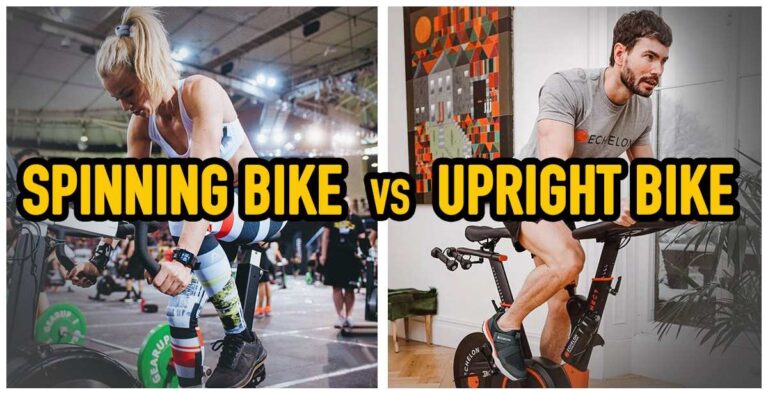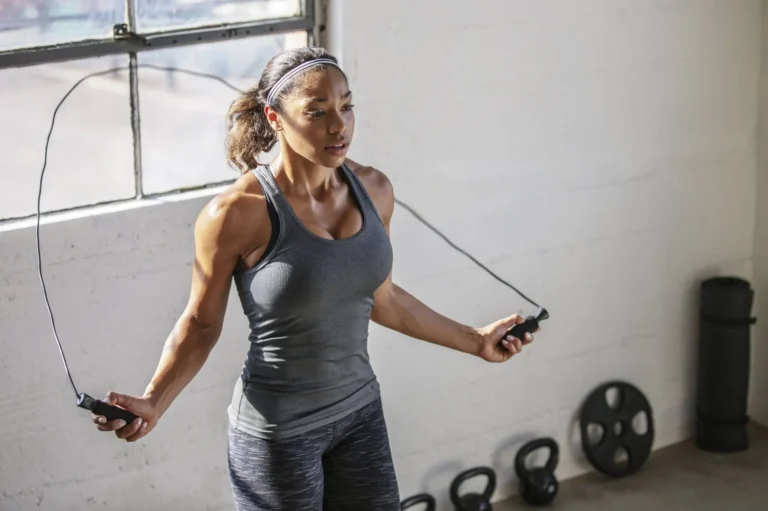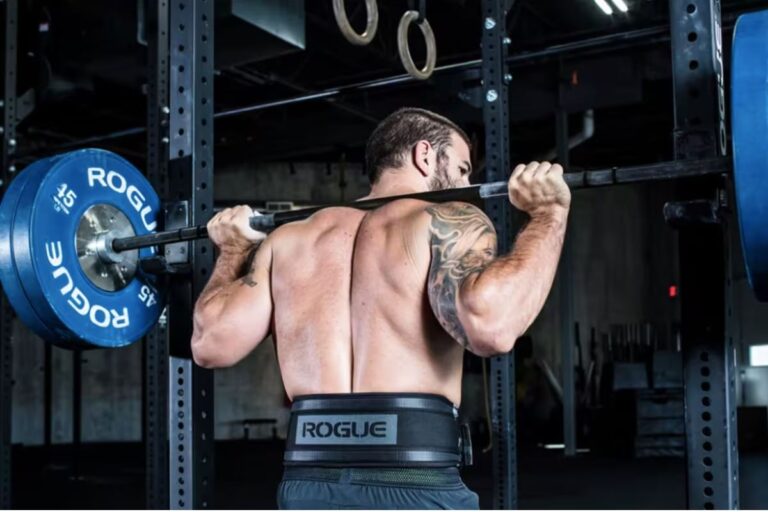5 Best Squat Alternatives For Bad Knees
You’re not alone if you’re experiencing knee pain but still want to maintain a healthy lower body. Squats are popular, but they can be rough on your knees, especially if you suffer from Patellofemoral Pain Syndrome (PFPS).
PFPS is common and can cause severe pain, leading to difficulty performing daily tasks such as climbing stairs and squatting.
In this blog post, we’ll explore some squat alternatives for bad knees, discuss when squats can be detrimental, provide tips on squat options for bad knees, look at how squats can aid rehabilitation, and answer some frequently asked questions.
What are some squat alternatives for bad knees? Some alternative squats for bad knees include box squats, goblet squats, split squats, the leg press machine, and resistance band squats. These exercises can help you build lower body strength while being gentler on your knees.
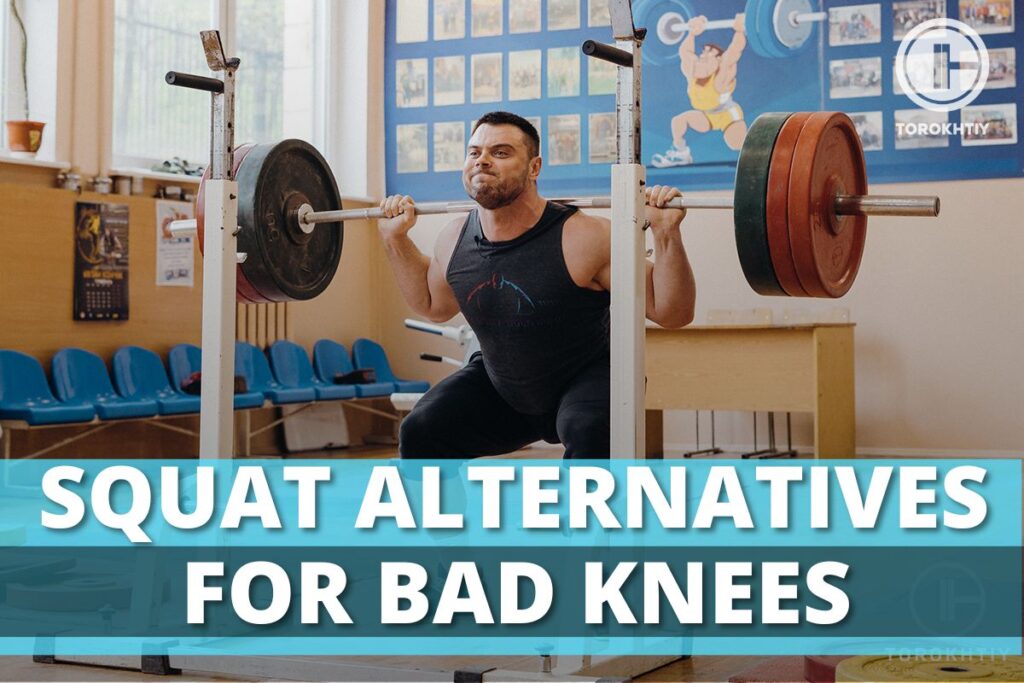
When Can Squats Be Bad for the Knees?
The squat is one of the most frequently and functionally used exercises in strength and conditioning. When performed correctly, squats are an excellent compound exercise that targets multiple muscle groups, including the quadriceps, hamstrings, glutes, and lower back. However, they can be problematic for individuals with knee issues. Here’s why:
1. Excessive Knee Stress
Squats involve bending the knees to a deep angle, significantly stressing the knee joints. This can exacerbate existing knee problems or lead to new ones.
2. Poor Form
Incorrect squat form can put additional pressure on the knees. Common form mistakes include letting the knees drift too far forward or allowing them to cave inwards during the movement.
3. Inflexibility
Limited flexibility in the ankles, hips, or lower back can force the knees to compensate, increasing the risk of injury.
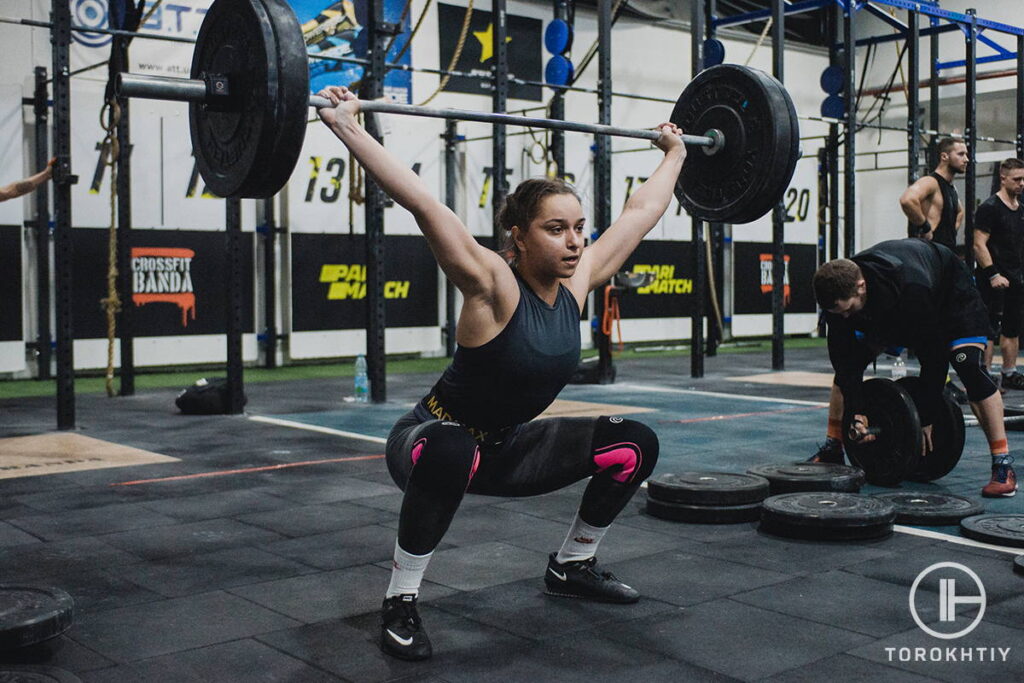
4. Current Injuries or Medical Conditions
For example, if you have severe arthritis or have experienced acute knee injuries, performing squats without modifications may not be suitable.
🔻12 Week Squat Program by Oleksiy Torokhtiy
Do you want to double your squat strength? In just 12 weeks, you’ll be able to boost your squat results.
This program transforms any ordinary squat into a powerful athletic movement.
What’s included:
- 12 weeks of squat programming;
- Effective combination of sets, reps, and weights;
- Fully designed and coached by Oleksiy Torokhtiy;
- Over 60+ movements, banded work, and weight training;
- Accessory work for core, joint stability and injury prevention;
- Max out on back squat and front squat at the end.
Start now and boost your squat results!
Squat alternatives for bad knees
Exercise alternatives to squats for bad knees offer a way to work on lower body strength and muscle development without putting excessive strain on your knees. Whether you have chronic knee pain or arthritis or are recovering from a knee injury, knee friendly squats alternatives can help you maintain a strong and healthy lower body.
1. Box Squats
Box squats are an excellent alternative if you have bad knees, as they limit the range of motion and reduce the stress on your knee joints. Start by standing before a stable surface like a bench or box. Lower yourself until your glutes touch the surface, then stand back up. This exercise allows you to perform a squat-like movement while maintaining control and minimizing knee stress.
2. Goblet Squats
Goblet squats involve holding a dumbbell or kettlebell close to your chest while performing the squat. This addition alters your center of gravity and encourages better form. By keeping the weight close to your body, you can engage your core and reduce the pressure on your knees.
3. Split Squats
Split squats, or static lunges, are an excellent option for working your leg muscles while being kind to your knees. Begin by stepping one foot forward and one foot back (split stance).
Lower your body into a lunge position, ensuring your front knee doesn’t go past your toes. This exercise shifts the focus away from the knee joint, making it a knee-friendly option.
4. Leg Press Machine
If your gym has a leg press machine, it can be an excellent substitute for squats in the case of bad knees. The leg press machine allows you to perform a squat-like movement with your back supported against the seat.
Using the leg press machine is excellent for people with knee pain because it is considered one of those low impact knee exercises. The device distributes the weight differently, reducing the knee strain while targeting your leg muscles.
5. Resistance Band Squats
Resistance band squats are a low-impact modification that provides support while you work on lower body strength. Wrap a small resistance band (loop-type) around your knees and perform a bodyweight squat. As you complete the movement, the band helps refocus your attention towards the hips, thus decreasing the stress on the knee.
By incorporating these squat alternatives into your workout routine, you can continue to strengthen your lower body without compromising your knee health. Remember to start with lighter weights or resistance and gradually increase intensity as your knees become more accustomed to the exercises.
Additionally, always prioritize proper form to ensure the best results and minimize the risk of further knee injury.
How to Modify Squats for Bad Knees?
Modifying traditional and alternative squats when you have bad knees is essential for minimizing pain, improving performance longevity, and maintaining lower extremity strength, power, and mobility.
Below are some critical points for squats when you have a bad knee. By paying attention to these aspects, you can maximize your exercises while protecting your knee joints.
1. Joint Alignment
Proper joint alignment is essential to reduce knee pain during the squat. Ensure that your knees track in line with your toes throughout the movement. Avoid letting your knees collapse inward, which places excessive stress on the knee joint. Maintaining proper alignment helps distribute the load evenly, reducing the risk of knee discomfort.
2. Depth of Movement
The depth of your squat is another critical factor. Limiting the range of motion can be beneficial for those with knee issues. When performing squat options, aim to reach a depth where your thighs are parallel to the ground or slightly above. This reduces the knee flexion angle and minimizes stress on the knee joints.
3. Foot Positioning
Your foot positioning plays a significant role in traditional and knee-friendly squat alternatives. Keep your feet shoulder-width apart or slightly wider to provide a stable support base.
Point your toes slightly outward, which can help with balance and reduce knee strain. Experiment with foot placement to find the most comfortable and practical position for your specific knee condition.
4. Core Engagement
Engaging your core muscles is essential for stability and support during squat alternatives. A strong core helps take some of the load off your knees by providing better overall body stability. Focus on keeping your abdominal muscles tight throughout the movement to maintain proper posture and protect your knees.
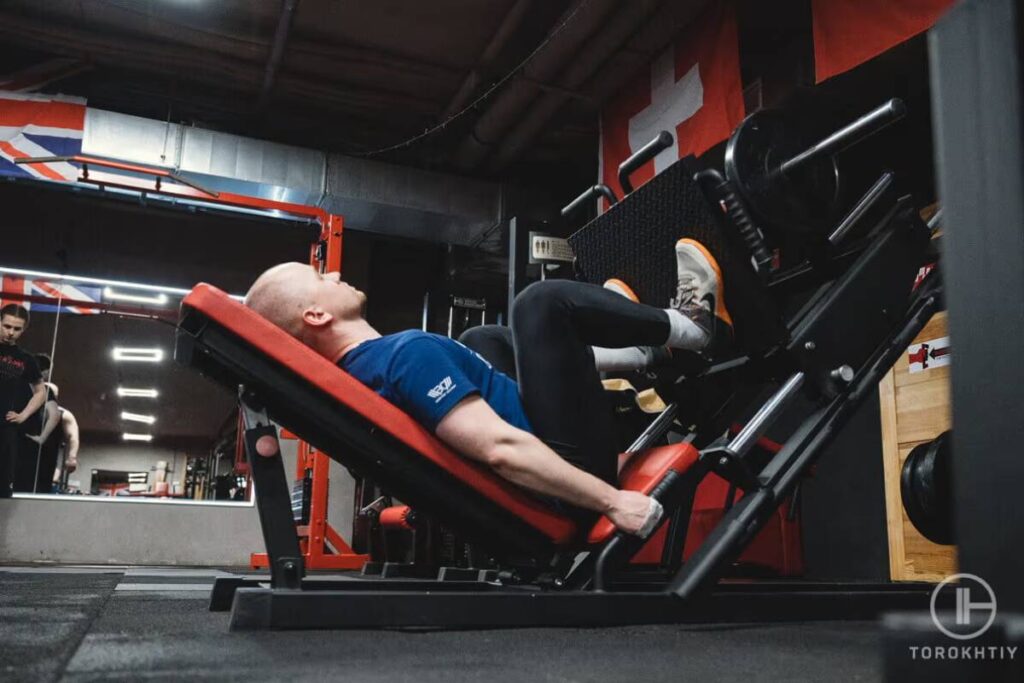
5. Hip Hinging
Instead of relying solely on your knees, incorporate hip hinging into your squat alternatives. This involves bending at the hips before bending the knees. By emphasizing hip hinging, you shift some of the load away from the knee joint and onto the hip joint, which can be more knee-friendly.
6. Use of Supportive Equipment
Consider using supportive equipment like knee sleeves or braces, if necessary. These can provide additional stability and compression to the knee joint, reducing discomfort during the squat. Consult with a healthcare professional or physical therapist to determine if such equipment is appropriate for your condition.
7. Warm-Up and Cool-Down
Proper warm-up and cool-down routines are essential for knee health. Before your workout, engage in dynamic stretches and mobility exercises to prepare your joints and muscles for the movement. After your workout, perform static stretches to maintain flexibility and reduce muscle tension.
Focusing on these biomechanical and physiological aspects allows you to perform squat alternatives for bad knees more effectively and with less pain. Listen to your body, start slowly, and progress as your knee condition improves.
Consult a fitness professional or physical therapist, as they can provide personalized guidance to ensure your squat alternatives align with your needs and goals.
FAQ
Should You Avoid Squats if You Have Bad Knees?
Whether squats suit your knee health or not depends on your situation. Squats with proper form and technique can strengthen the muscles around your knee joint and benefit your knee health.
However, if you are experiencing severe knee issues or pain, it is advisable to consult with a healthcare professional or physical therapist. They can help you determine whether squats are appropriate for you, guide you on modifying the exercise, or suggest alternative knee-friendly exercises.
Remember, it’s always better to be safe than sorry about your health.
How Do You Squat With Chronic Knee Pain?
Squatting with chronic knee pain requires special attention. It is essential to consult with a healthcare professional or physical therapist to assess the severity of your knee condition. To reduce the risk of further injury, consider doing partial squats with reduced depth, lighter loads, wider stances, and supportive equipment.
Proper weight and intensity progression is crucial to maintaining stronger and healthier knees, particularly with chronic knee problems.
Can My Knees Heal From Squatting?
Whether your knees can heal from squatting depends on the cause of your knee issues. When done with proper form and appropriate weights, squats can strengthen the muscles around the knee joint, improving knee health.
However, if you have an underlying knee condition or injury, it is crucial to consult with a healthcare professional or physical therapist for a proper diagnosis and personalized rehabilitation plan.
Some knee issues may require targeted treatment and rest to heal effectively, so it is always better to be safe than sorry.
Conclusion
If you’re suffering from bad knees, doing exercises that strengthen your lower body can be disheartening. Luckily, other activities can help you achieve your fitness goals without putting extra pressure on your joints.
Maintaining proper form while performing these exercises is crucial, and we recommend seeking advice from a healthcare professional or a fitness expert if you have any concerns. We hope you found this article informative and helpful.
Do you have any pain in your knees currently? Please feel free to share your thoughts with us, and if you have any questions or concerns, don’t hesitate to contact us via the comments section.
Reference:
- Slater LV, Hart JM. Muscle Activation Patterns During Different Squat Techniques. J Strength Cond Res. 2017 Mar;31(3):667-676. doi: 10.1519/JSC.0000000000001323. PMID: 26808843.
- Pereira PM, Baptista JS, Conceição F, Duarte J, Ferraz J, Costa JT. Patellofemoral Pain Syndrome Risk Associated with Squats: A Systematic Review. Int J Environ Res Public Health. 2022 Jul 28;19(15):9241. doi: 10.3390/ijerph19159241. PMID: 35954598; PMCID: PMC9367913.
- Hartmann H, Wirth K, Klusemann M. Analysis of the load on the knee joint and vertebral column with changes in squatting depth and weight load. Sports Med. 2013 Oct;43(10):993-1008. doi: 10.1007/s40279-013-0073-6. PMID: 23821469.
- Pallarés JG, Cava AM, Courel-Ibáñez J, González-Badillo JJ, Morán-Navarro R. Full squat produces greater neuromuscular and functional adaptations and lower pain than partial squats after prolonged resistance training. Eur J Sport Sci. 2020 Feb;20(1):115-124. doi: 10.1080/17461391.2019.1612952. Epub 2019 May 15. PMID: 31092132.
- Gullett JC, Tillman MD, Gutierrez GM, Chow JW. A biomechanical comparison of back and front squats in healthy trained individuals. J Strength Cond Res. 2009 Jan;23(1):284-92. doi: 10.1519/JSC.0b013e31818546bb. PMID: 19002072.
- Bueckert, S. (2021). Bodyweight squats: Benefits, form, and how the Row-N-Ride® can help.
- Schoenfeld BJ. Squatting kinematics and kinetics and their application to exercise performance. J Strength Cond Res. 2010 Dec;24(12):3497-506. doi: 10.1519/JSC.0b013e3181bac2d7. PMID: 20182386.
- Bueckert, S. (2021). Bodyweight squats: Benefits, form, and how the Row-N-Ride® can help. Sunny Health and Fitness. https://sunnyhealthfitness.com/blogs/health-wellness/bodyweight-squats-benefits-forms
Why Trust Us?
With over 20 years in Olympic Weightlifting, our team does its best to provide the audience with ultimate support and meet the needs and requirements of advanced athletes and professional lifters, as well as people who strive to open new opportunities and develop their physical capabilities with us.
By trusting the recommendations of our certified experts in coaching, nutrition, dietology, and sports training programming, as well as scientific consultants, and physiotherapists, we provide you with thorough, well-considered, and scientifically proven content. All the information given in the articles concerning workout programming, separate exercises, and athletic performance, in general, is based on verified data. We ensure that you can rely on our professionals’ pieces of advice and recommendations that can be treated as personalized ones which will benefit you and fully meet your needs.
The product testing process is described in more detail here
Author: Ernesto Mendez
Orthopedic Clinical Specialist
Best Results: Snatch – 208 kg,
C&J – 240 kg
Dr. Ernesto Mendez is a licensed physical therapist, a board Orthopedic Clinical Specialist (OCS) and founder of Movement 4 Wellness Physical Therapy, LLC. He earned his degree from Thomas Jefferson University. He is also an Olympic weightlifting coach (USAW L1) and Functional Fitness Level 1 Trainer. His experience includes the areas of pain management, movement analysis, injury recovery, surgical rehab, corrective exercise, and athletic, military, and occupational performance. Dr Mendez is passionate about Olympic weightlifting and fitness. Ernesto Mendez is responsible for designing multiple training programs, writing blog articles, posting daily weightlifting content, doing live weightlifting and mobility seminars.

